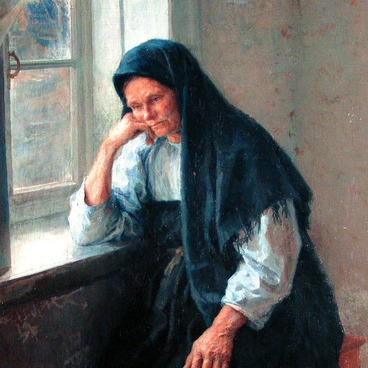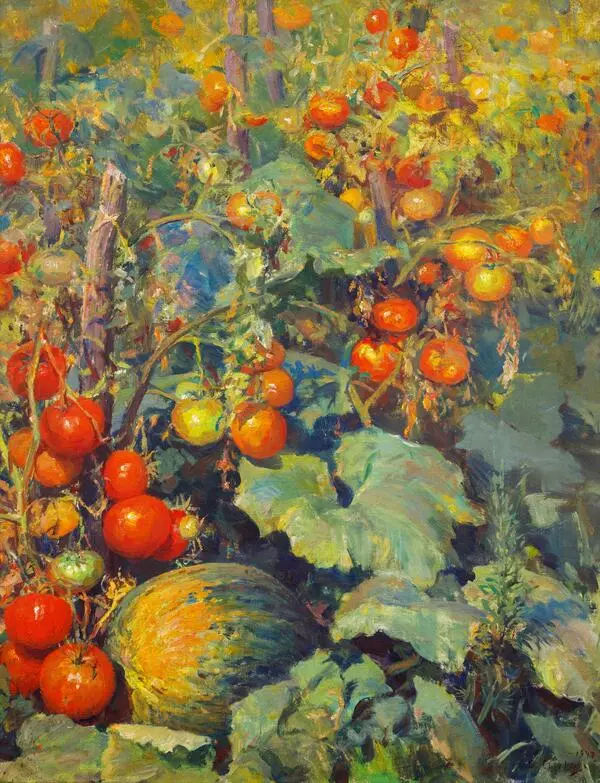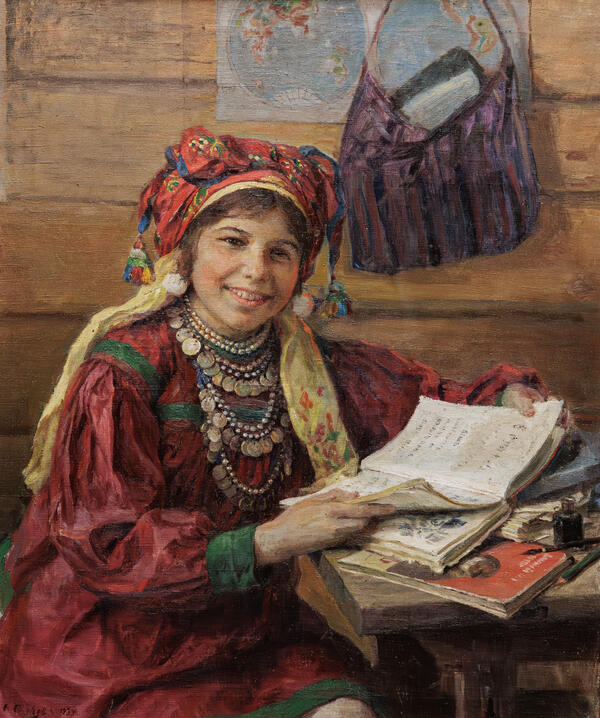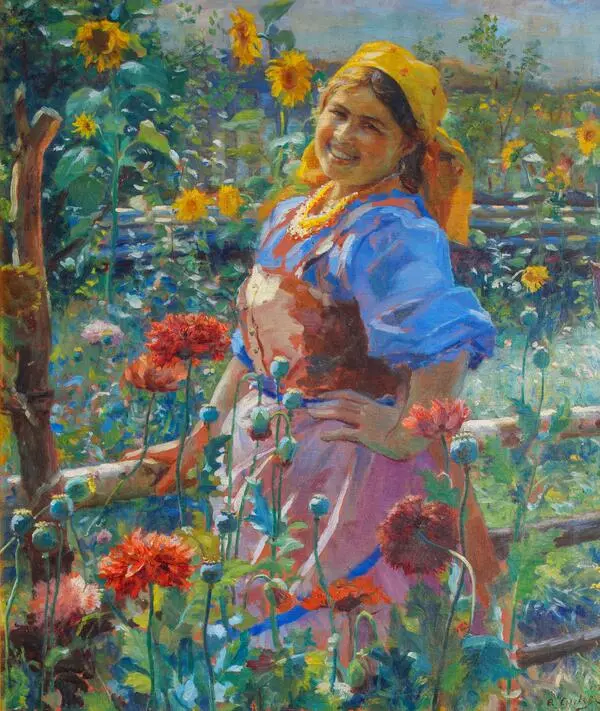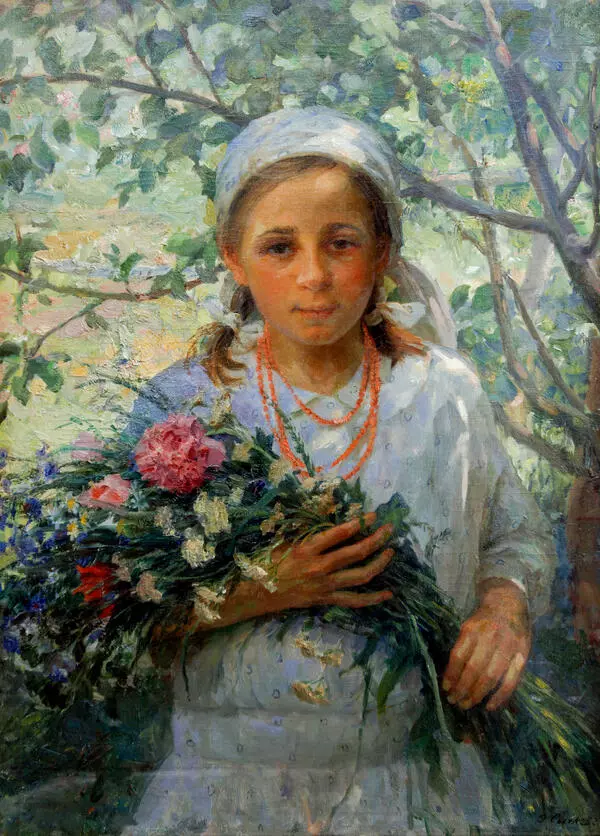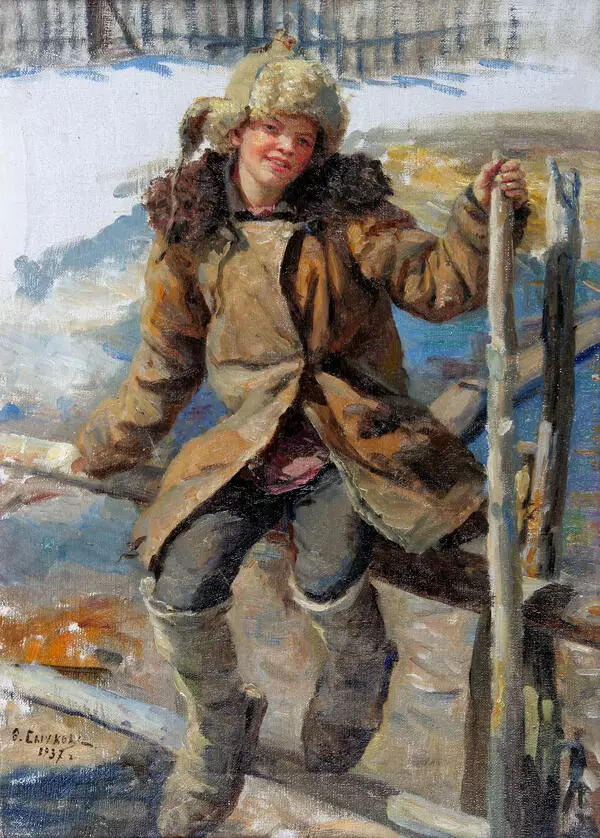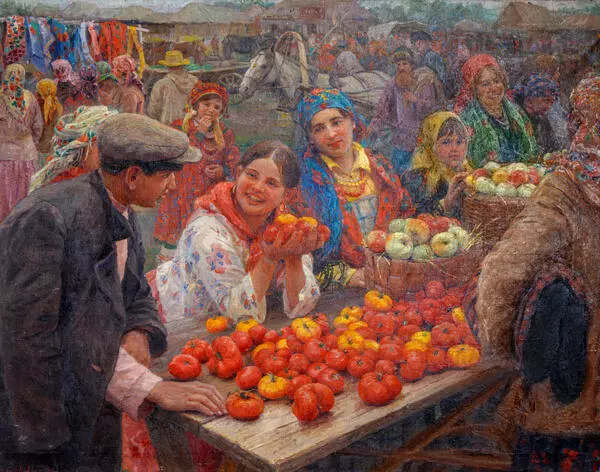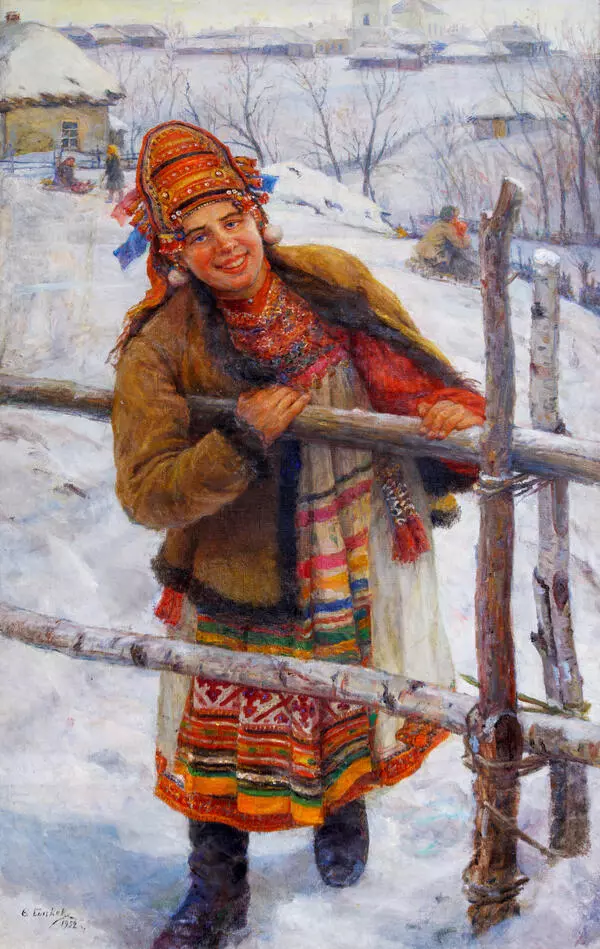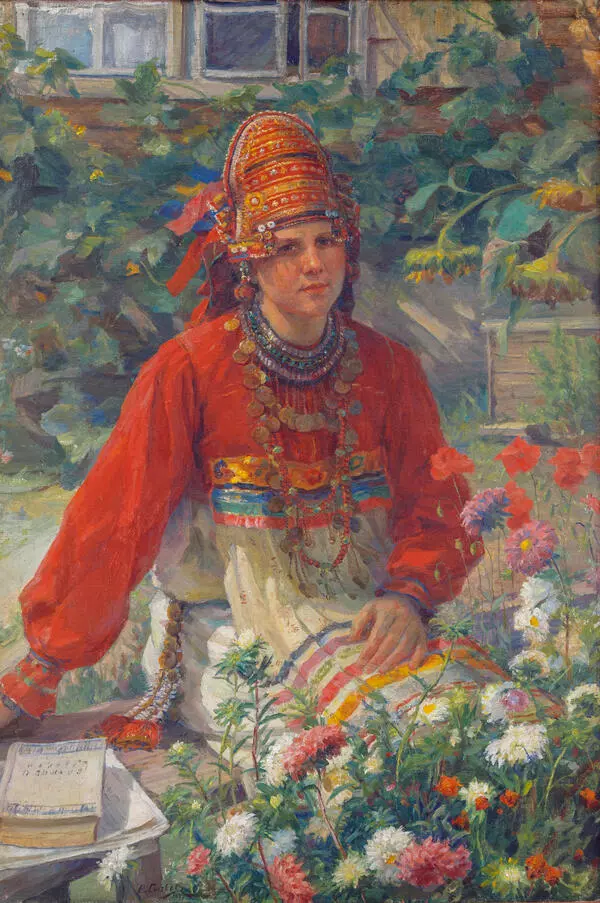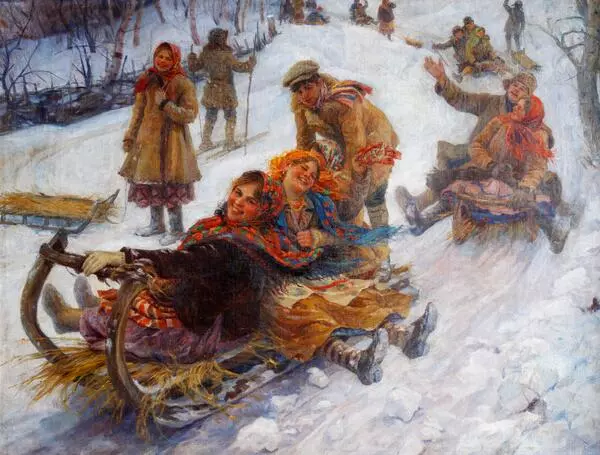In the 1900s, Fedot Sychkov lived in St. Petersburg. He was an extremely popular portraitist there: bankers, officials, fashionable women turned to him for portraits. Most likely, famous customers were attracted to him by his ability to paint quickly and accurately, grasping the most subtle features of a person’s appearance. Generally, people commissioned ceremonial or representative portraits — that is, portraits where the artist showed his models in a respectable way, depicting them in their best outfits and in a beautiful setting.
A spectacular example of the representative portrait of that time is the “Portrait of Woman in Black”, created in 1904. Here, the artist depicted his wife Lydia Sychkova, née Ankudinova. The young woman deliberately posed for the exquisite portrait: she wears an expensive black dress and jewelry.
The master boldly outlined the silhouette of the fragile female figure against the dark red background of the drapery. He chose an unusual angle, as if the woman looks at the viewer slightly from above, thus granting the portrait a special dignity. But the spectacular pose of the young woman, her imposing appearance, and the richness of the interior of the house did not obscure the naturalness that Fedot Sychkov was so fond of noticing in his models. The artist masterfully conveyed the richness of the heroine’s inner world, her dreaminess and enlightened sadness. Thus, in the painting ‘Portrait of Woman in Black’, opposite genres are intertwined: the representative and the intimate (subtle psychological) portrait. The best portraitists of that time, like Valentin Serov and Ilya Repin, worked similarly.
In his artistic legacy, among the commissioned artworks, are several paintings associated with poet Alexander Pushkin. The writer’s relatives commissioned them. The National Pushkin Museum in St. Petersburg houses a portrait, created in 1898, in which the eldest son of poet Alexander Alexandrovich is depicted by Sychkov. He posed for him in the house of Major General Shipov. In addition, the State Hermitage Museum displays a portrait of the Major General himself, created in 1895. Beyond that, the artist was commissioned more than five times by Alexandra Arapova — the daughter of Natalia Pushkina and General Petr Lanskoy. Unfortunately, many of the commissioned portraits have not been preserved.
A spectacular example of the representative portrait of that time is the “Portrait of Woman in Black”, created in 1904. Here, the artist depicted his wife Lydia Sychkova, née Ankudinova. The young woman deliberately posed for the exquisite portrait: she wears an expensive black dress and jewelry.
The master boldly outlined the silhouette of the fragile female figure against the dark red background of the drapery. He chose an unusual angle, as if the woman looks at the viewer slightly from above, thus granting the portrait a special dignity. But the spectacular pose of the young woman, her imposing appearance, and the richness of the interior of the house did not obscure the naturalness that Fedot Sychkov was so fond of noticing in his models. The artist masterfully conveyed the richness of the heroine’s inner world, her dreaminess and enlightened sadness. Thus, in the painting ‘Portrait of Woman in Black’, opposite genres are intertwined: the representative and the intimate (subtle psychological) portrait. The best portraitists of that time, like Valentin Serov and Ilya Repin, worked similarly.
In his artistic legacy, among the commissioned artworks, are several paintings associated with poet Alexander Pushkin. The writer’s relatives commissioned them. The National Pushkin Museum in St. Petersburg houses a portrait, created in 1898, in which the eldest son of poet Alexander Alexandrovich is depicted by Sychkov. He posed for him in the house of Major General Shipov. In addition, the State Hermitage Museum displays a portrait of the Major General himself, created in 1895. Beyond that, the artist was commissioned more than five times by Alexandra Arapova — the daughter of Natalia Pushkina and General Petr Lanskoy. Unfortunately, many of the commissioned portraits have not been preserved.




